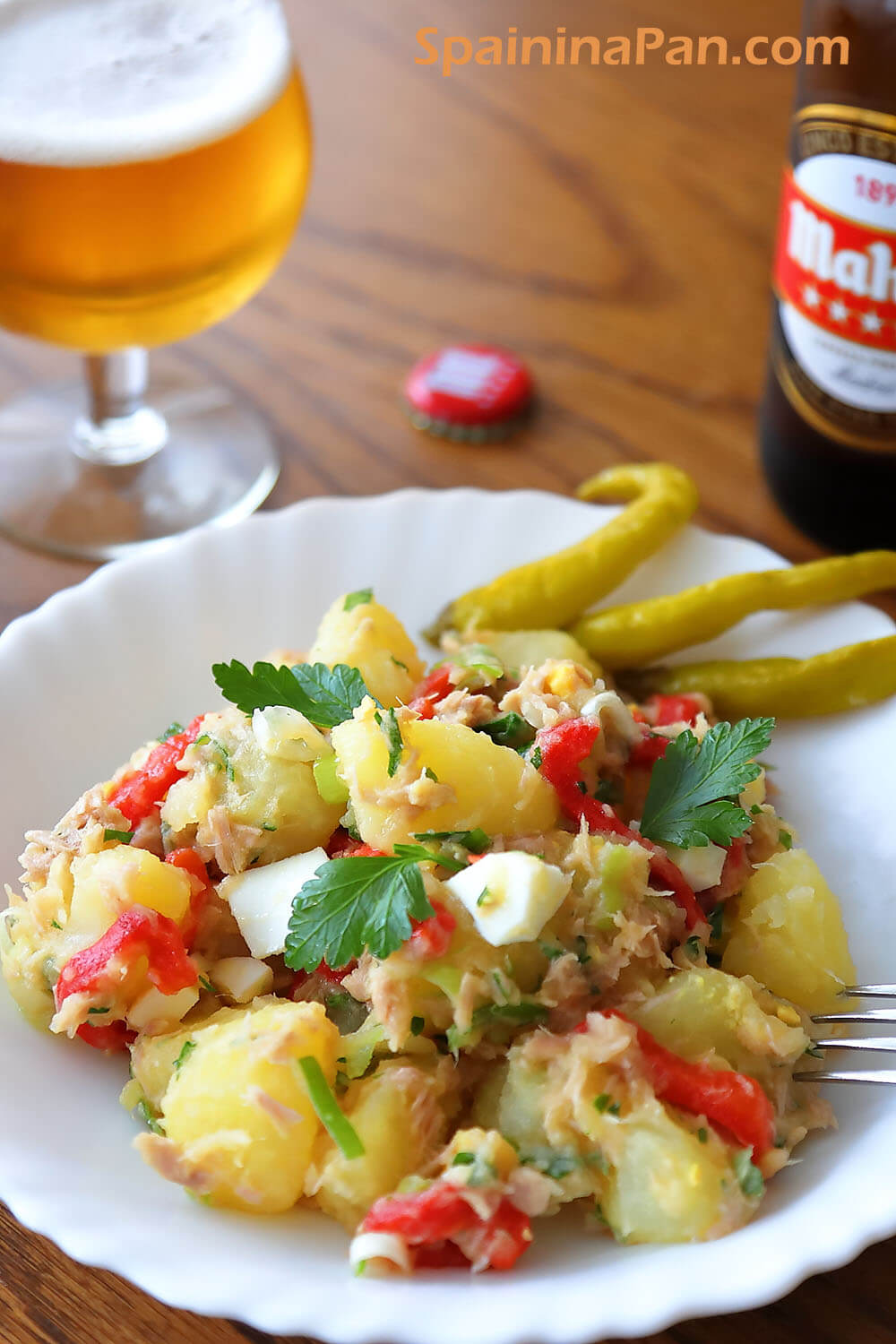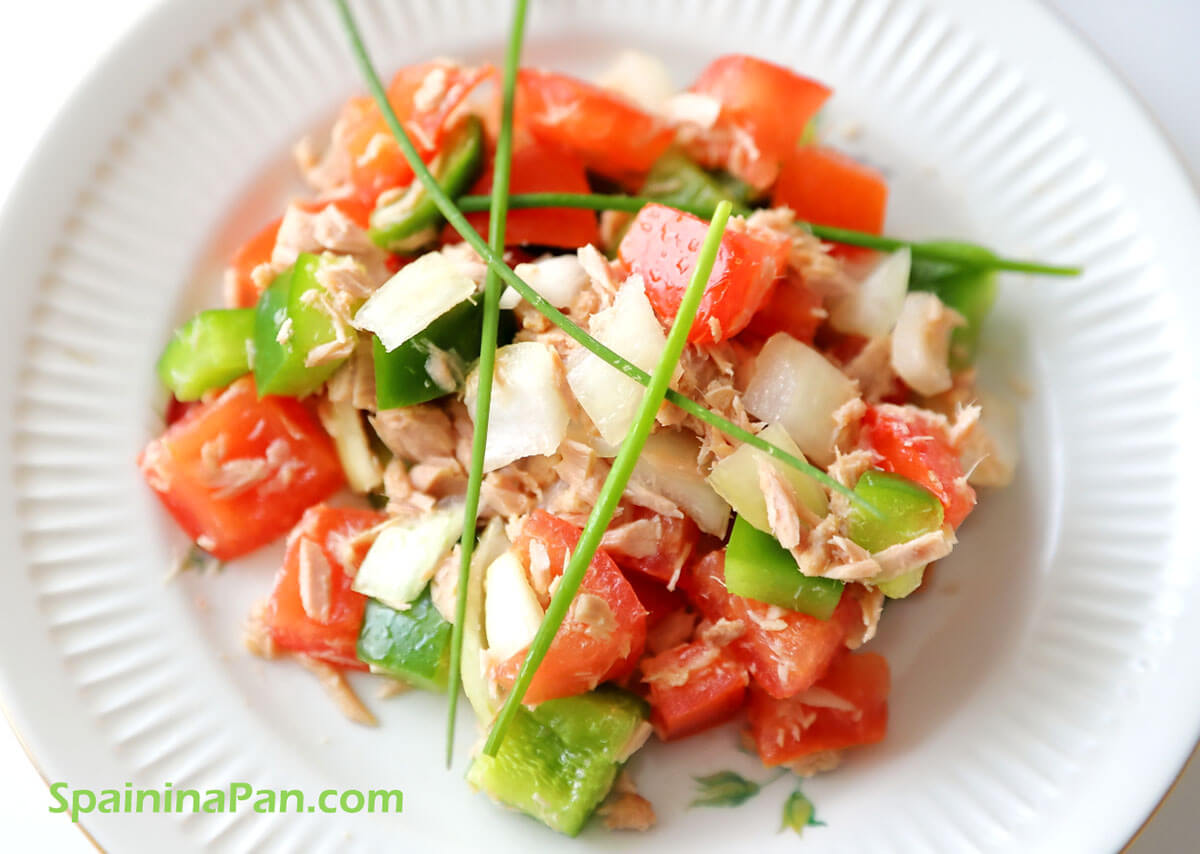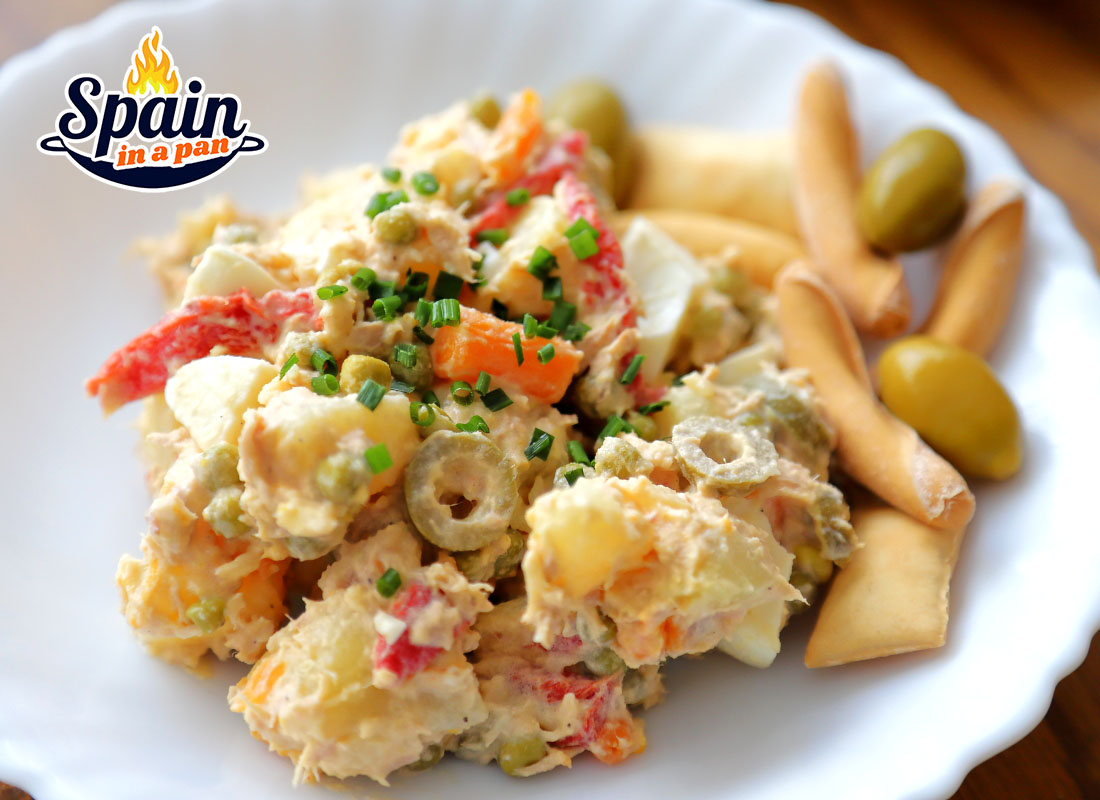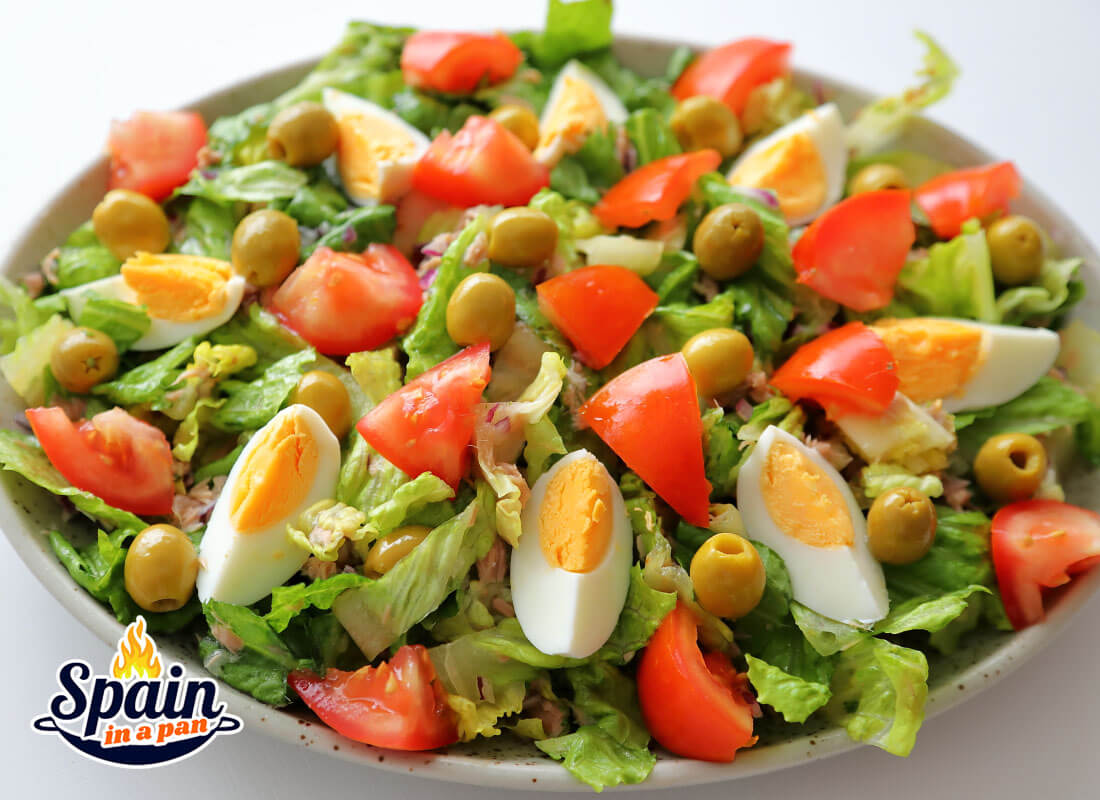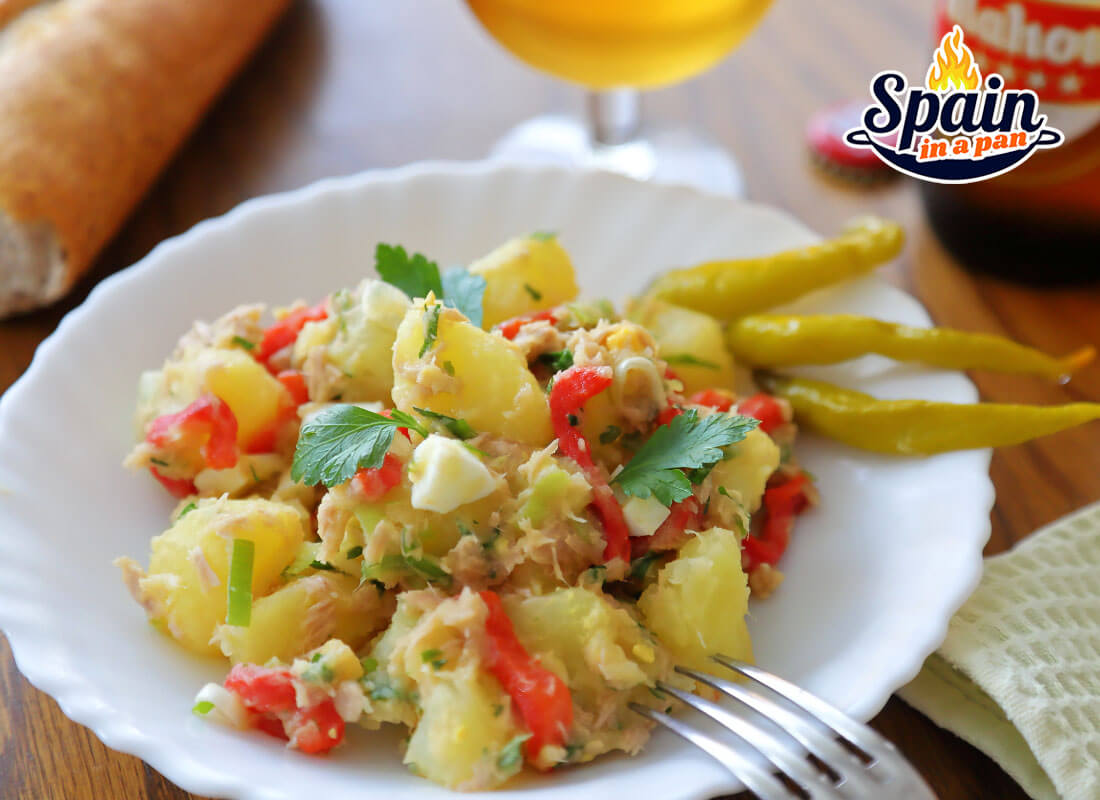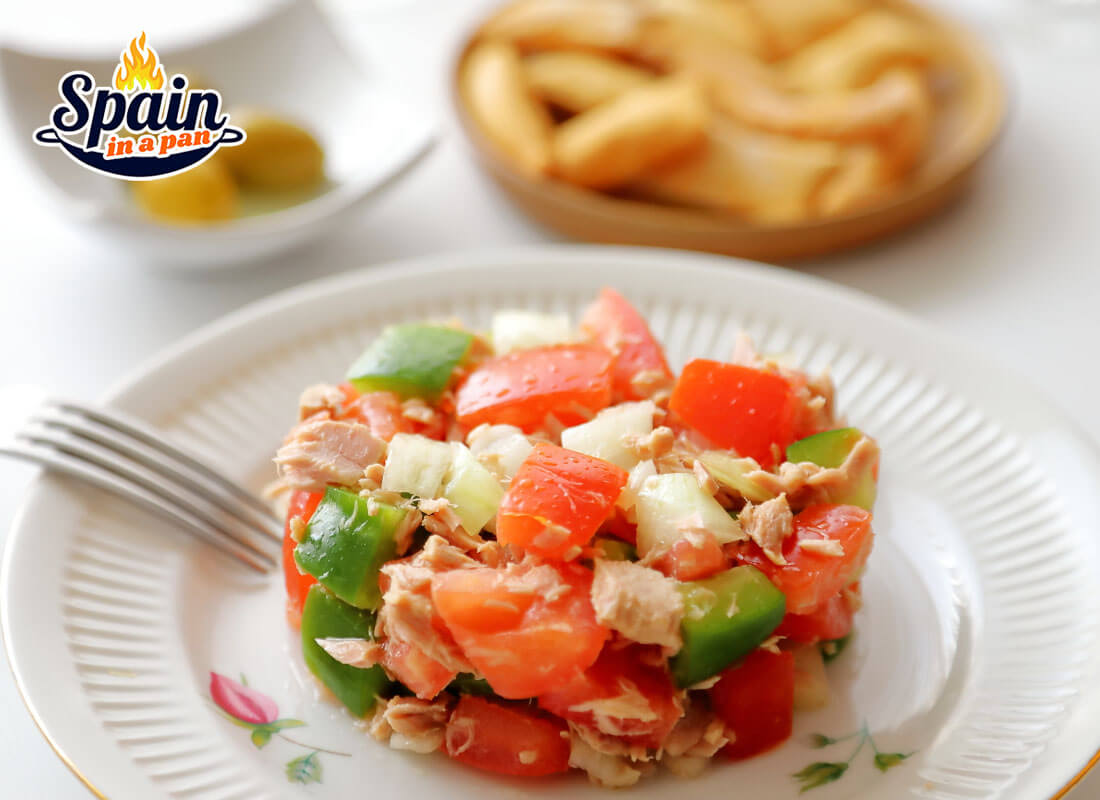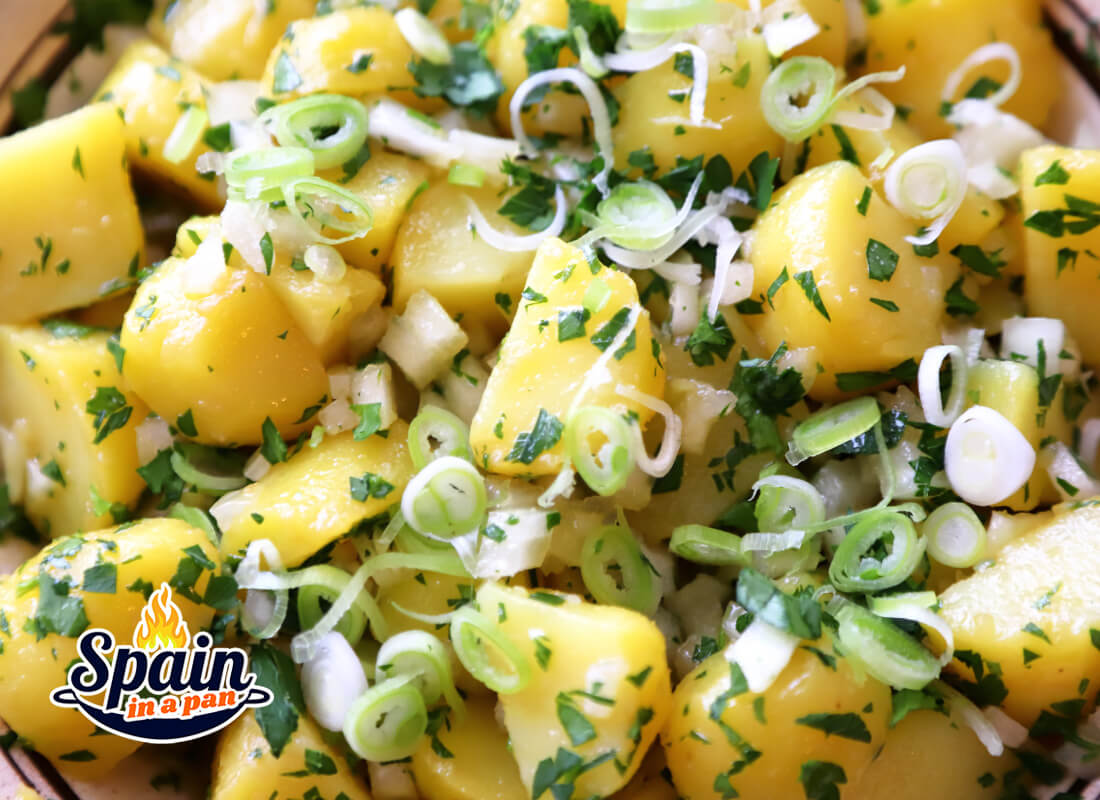- HOME
- Salads
Authentic Spanish Salad Recipes : Fresh Flavors from Spain!
(Ensaladas Españolas)
By Edu Valor / Author - Spanish Chef
On a hot day, there’s nothing better than something light, fresh, and satisfying—and that’s where Spanish salad recipes shine. These dishes are refreshing, nutrient-packed, and incredibly versatile.
Growing up in Spain, we often had some form of salad with our meals, especially in the spring and summer months when the produce was at its best.
The Foundations of a Spanish Salad
At home, our go-to ingredients were humble but flavorful: tomato, onion, and lettuce. Even without adding anything else, those three make an excellent ensalada básica—perfect as a light side dish for almost any meal.
You get crispness, acidity, a little sweetness, and of course, a good dose of fiber and vitamins.
A Tradition Passed Down from Rome
Salad-making has ancient roots. Hispania, being part of the Roman Empire, inherited various ways of preparing raw vegetables. In fact, the word "salad" comes from the Latin sal, meaning "salt"—since Roman vegetables were often seasoned this way. This is also the origin of the Spanish word "ensalada", literally meaning salted.
Over time, simple vegetables began to be dressed with olive oil, vinegar, or lemon juice—ingredients that are now staples in Spanish households. But we didn’t stop there. My family, like many others, often added:
- Olives
- Boiled potatoes
- Cucumbers
- Bell peppers (roasted or raw)
- Tuna
- Boiled eggs
These additions could vary daily, based on what was available or leftover. The result was always something simple, balanced, and flavorful, usually served alongside fish, shellfish, chicken, or red meat.
Even the more basic, raw-only salads pair surprisingly well with hearty stews—especially bean or potato stews. I often enjoy them that way. And of course, who can say no to a side salad next to roasted chicken and fries? That’s a classic Sunday meal in many Spanish homes.
No matter how it’s assembled, this type of salad is often referred to as "ensalada mixta"—a mix of fresh, everyday ingredients that complement almost any main dish.
Ensalada or Ensaladilla? What’s the Difference?
These two terms—ensalada and ensaladilla—are sometimes used interchangeably, but they’re not the same.
- Ensalada is a salad made entirely from raw vegetables. It’s typically seasoned with salt and dressed with oil, vinegar, or lemon juice.
- Ensaladilla, on the other hand, includes cooked ingredients, and not always vegetables. It may feature boiled potatoes, carrots, tuna, shrimp, eggs, chicken, or anchovies—and it’s often dressed with mayonnaise, sometimes enhanced with mustard or lemon juice.
The most famous example is Ensaladilla Rusa, a creamy, chilled potato salad that’s popular across Spain. I like mine very cold, straight from the fridge—especially on a hot summer afternoon.
While the base concepts are simple, both ensaladas and ensaladillas vary widely by region and even by village. Each has its own twist, and many traditional Spanish salad recipes have names that reflect their local roots.
Spanish Salad Recipes as a Full Meal?
Absolutely. Spain has a rich tradition of vegetarian and plant-based dishes, especially from times when meat or fish wasn’t readily available. During and after the Spanish Civil War, for example, people relied on energy-rich yet inexpensive ingredients like:
- Bread
- Potatoes (including sweet potatoes or boniatos)
- Rice
- Legumes
- Mushrooms
- Lupins
- Chestnuts
Even orange peels were used creatively—such as in eggless tortillas—so that nothing went to waste.
Many salads originated from this resourcefulness. Leftovers became a base for cold dishes. Stews without meat were hearty enough to stand alone, especially for those working in the fields. Farmers knew that potatoes provided lasting energy, and they became essential in summer meals.
One example is the Ensalada Campera—a rustic, hearty salad typically made with boiled potatoes, peppers, onion, tuna, and egg. While we can't say for certain that it was born directly from post-war scarcity, it’s deeply associated with countryside life, farmer’s lunches, and the warm summer months.
These are not just side dishes—they’re complete meals, full of energy and made with purpose.
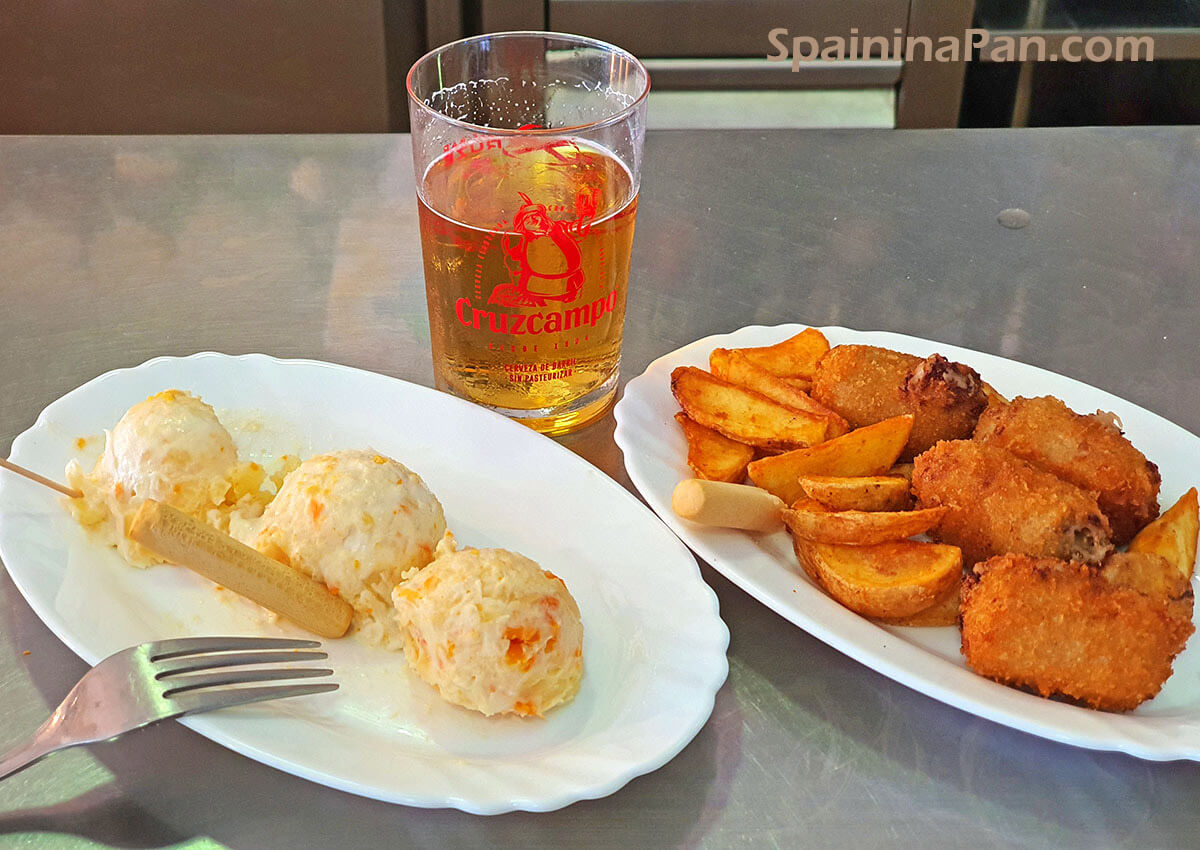 Tapas of ensaladilla with puchero croquettes and the obvious cold beer.
Tapas of ensaladilla with puchero croquettes and the obvious cold beer.
A Final Note on Ingredients
Whether you’re making a light ensalada or a rich ensaladilla, always opt for fresh ingredients. It’s common sense: the flavor and texture of fresh vegetables, eggs, and fish are far superior to canned or jarred alternatives.
There’s a reason why Spanish salads remain a beloved part of everyday cuisine—they’re flexible, flavorful, and deeply rooted in tradition.
Looking to Try One?
You could start with a basic salad of lettuce, tomato and onion but I figure you want something more Spanish.
Start with an Ensalada Mixta, an Ensaladilla Rusa, or the beloved Ensalada Campera—each a celebration of Spanish culinary heritage and seasonal, local produce.
*****
